‘pieces of home’ creates symbiotic solutions by leveraging discarded natural materials
Pieces of Home: Exploring Materials of Mexico by space 10
Through ‘Pieces of Home: Exploring Materials of Mexico’, IKEA’s external innovation hub SPACE 10 seeks to find alternatives to shape our future homes and daily items by supporting the local ecosystem. In collaboration with five designers in Mexico, the design team explores materials and design processes that create a positive impact on local communities. Thus, by leveraging discarded natural materials — from abundant soil to precious native beeswax and the waste from fruit and vegetable harvests — they create symbiotic solutions for the earth, community, and local crafts.
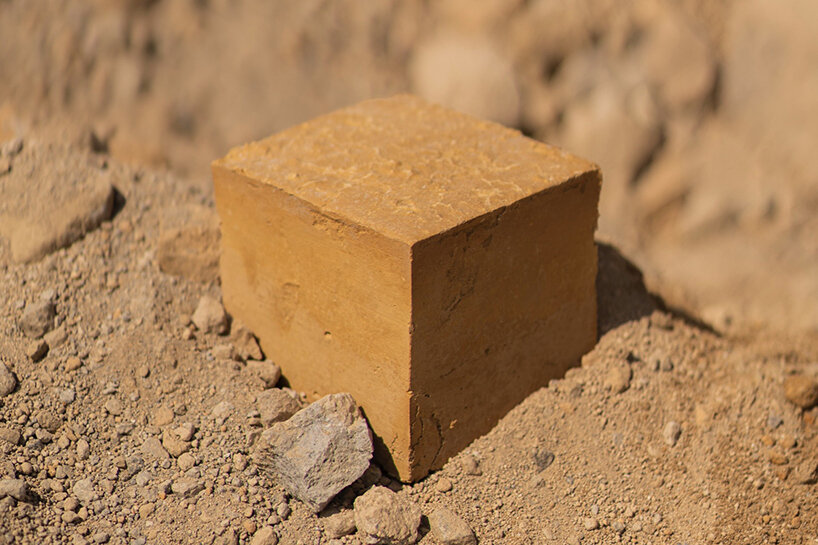
all images by Almendra Isabel
building the house of tomorrow
‘How can we design in symbiosis with our local environments to shape the homes of tomorrow?’ In an attempt to respond to this question, the future-living lab has invited material designers from around Mexico to explore their bioregions through the lens of local materials. With Mexico’s vast biodiversity being the mentor on this six-week journey, the five designers introduce their better ways of making.
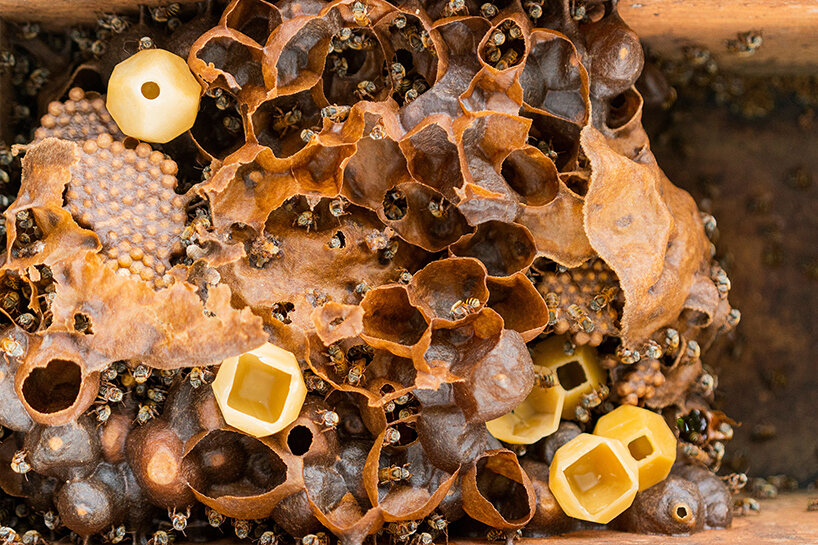
Homes for Honey, Tixpéhual, Yucatán
‘Homes for Honey’ is a collaboration project between humans and Melipona — a stingless bee native to Mexico, producing honey, pollen, and wax. The humans prefabricate the foundations, and the bees finish the construction. Designer Gabriel Calvillo (see more here) employs beeswax to mold potes and piqueras, structures essential to native hives.
‘In the Mayan tradition, the origin of bees is spoken of as something that precedes the birth of time itself,’ the designer says. ‘They’re essential for conserving biodiversity, since their relationship with native flowering plants is the result of thousands or even millions of years of coevolution’. 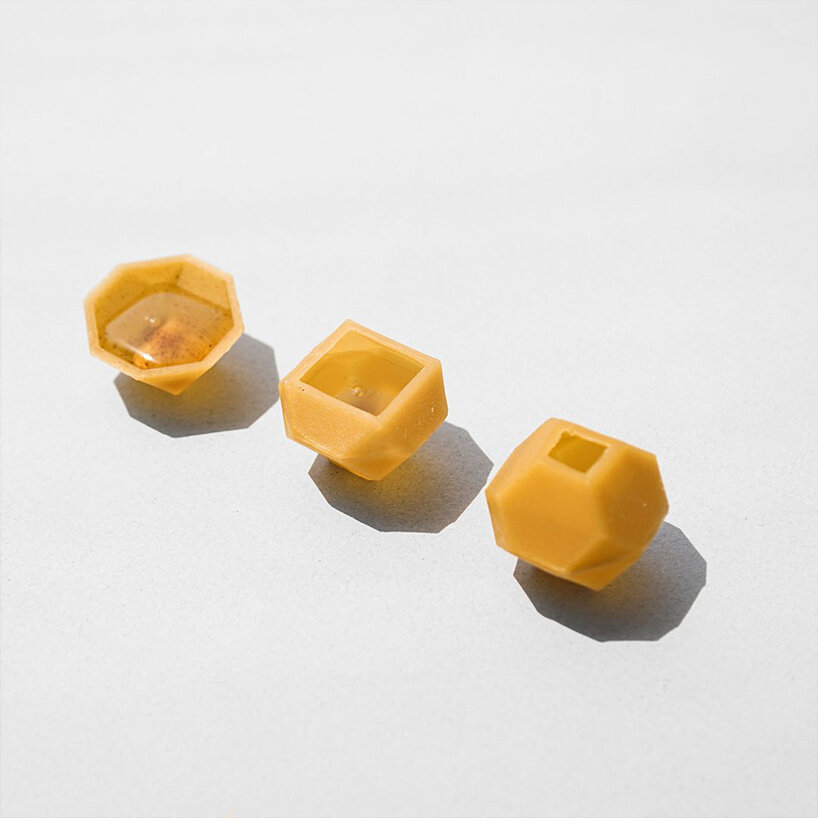
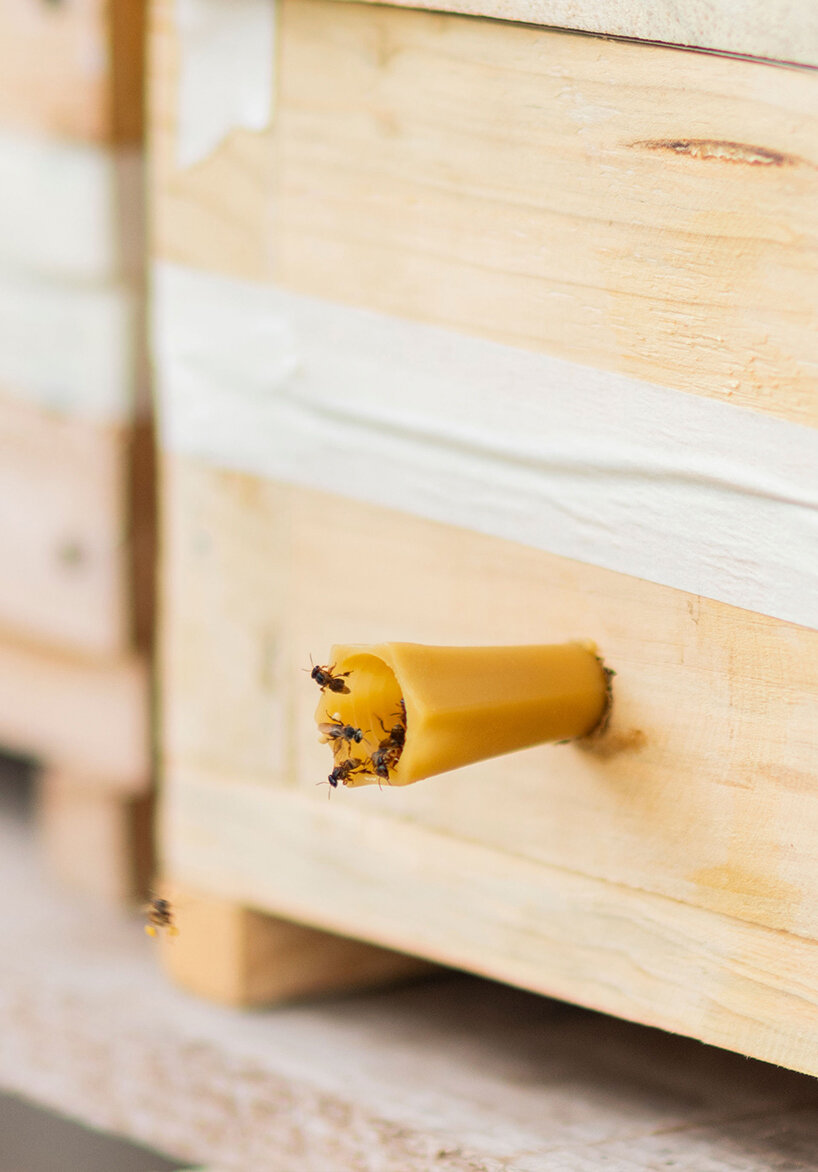
Weaving Heirlooms, Tequesquitlán, Jalisco
‘Weaving Heirlooms’ transforms tamarind fibers into thread to explore possibilities in textile applications. The family of designer Paloma Morán Palomar farms tamarind in Tequesquitlán, a small village in the west of Mexico. While the pulp is edible and the seeds can be used as health remedies, the pod and fiber are discarded as waste. Hence, by experimenting with what is at hand, the designer turns waste into something valuable yet beautiful. The resulting rug intertwines traditional weaving techniques with current material discoveries.
‘Agriculture is something that we will always need as food is always going to be important for us. If we can recover waste from agriculture, we can have a more sustainable approach to the way we design,’ Paloma Morán Palomar comments.
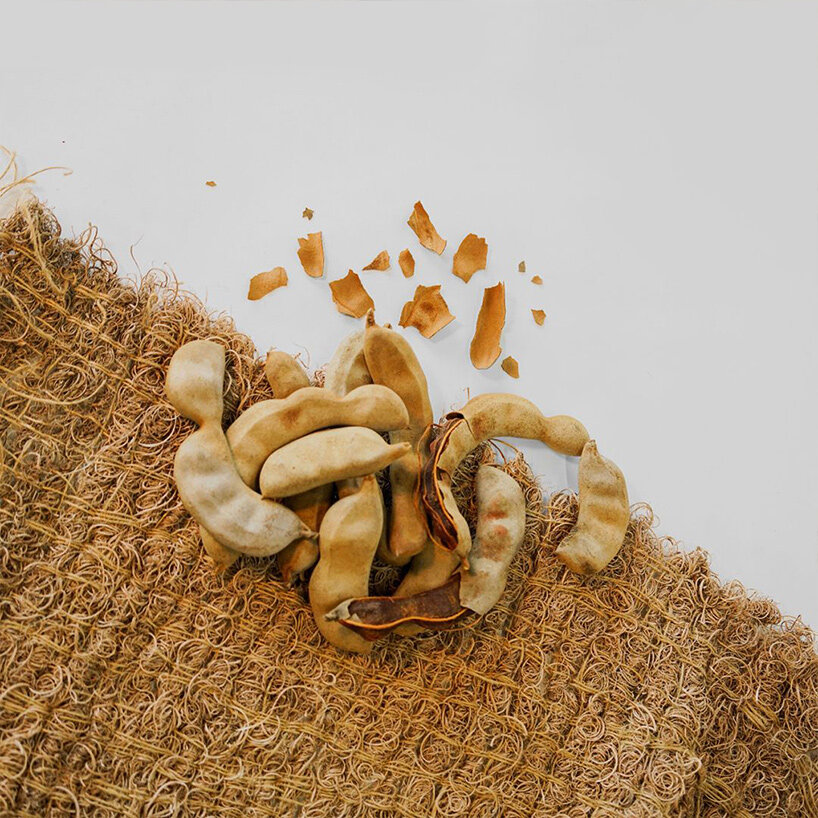
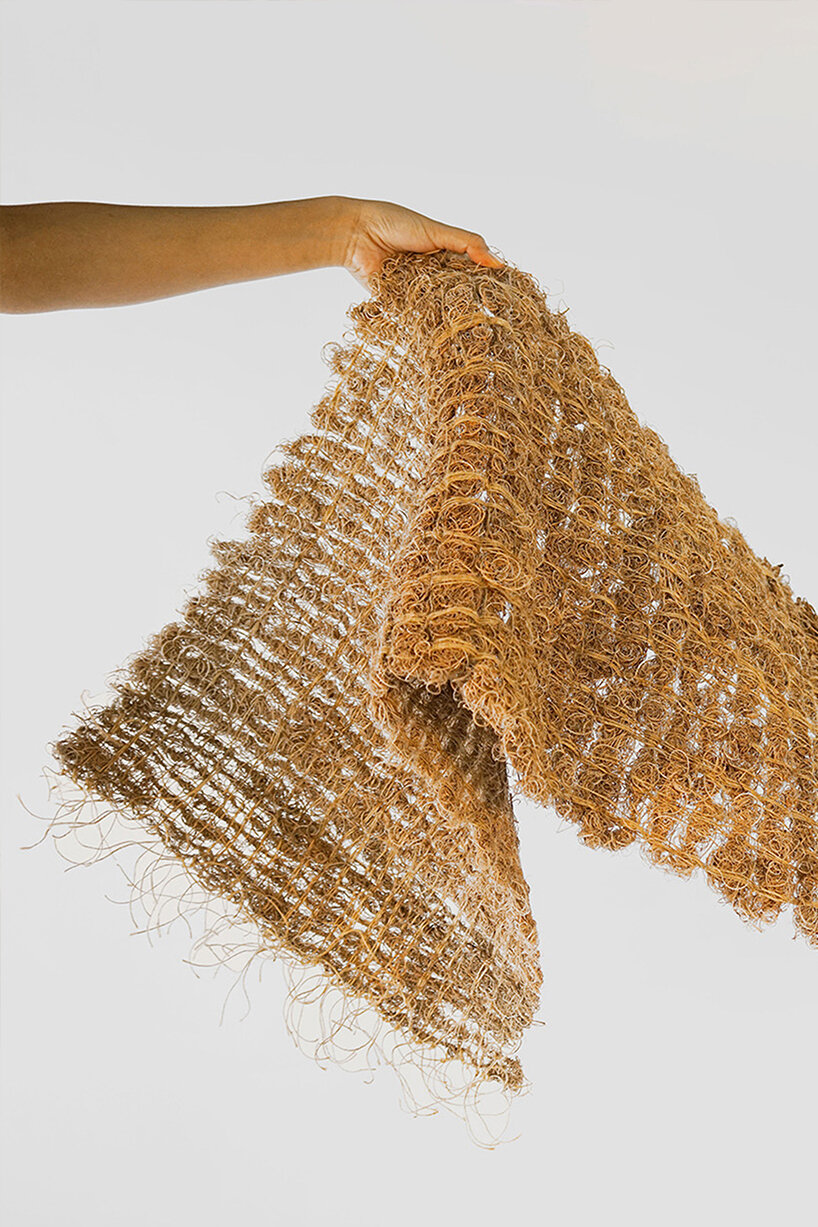
Articles of Protection, Milpa Alta, Mexico City
‘Articles of Protection’ turns waste from corn harvests into a series of vessels to serve, protect and transport food. For this project, designer Taina Campos (see more here) worked with Mujeres de la Tierra, a community organization supporting women who have experienced domestic violence. Thus, to become financially independent, the women create and sell tortillas, tamales, and stole, all made from local corn.
In an attempt to provide non-plastic vessels to carry their foods, the designer reuses corn husk combined with corn starch and water, giving the material a new life as packaging. With these vessels, Campos engages people, food, and place, while reducing plastic waste and agricultural residues.
‘For the agricultural populations of Mesoamerica, corn not only represented the basis of nutrition, it is also seen as the essence of the human being,’ Campos says. ‘Today, there are around 60 species of corn in Mexico, but many of them are in danger of extinction. The cultivation of native corn is gradually being displaced by foreign hybrids and transgenic seeds.’
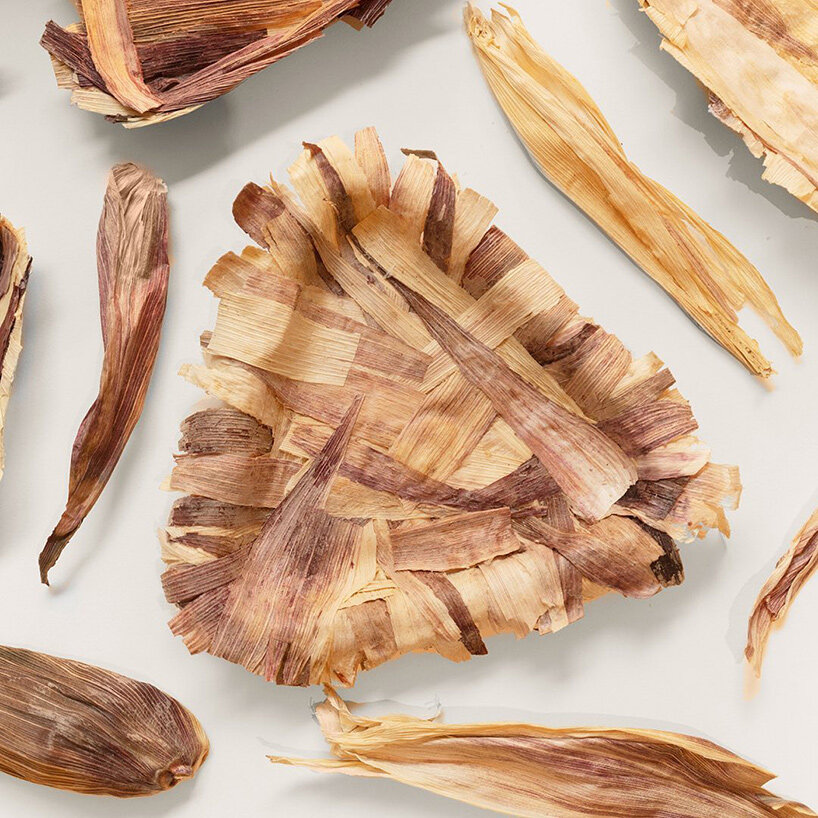
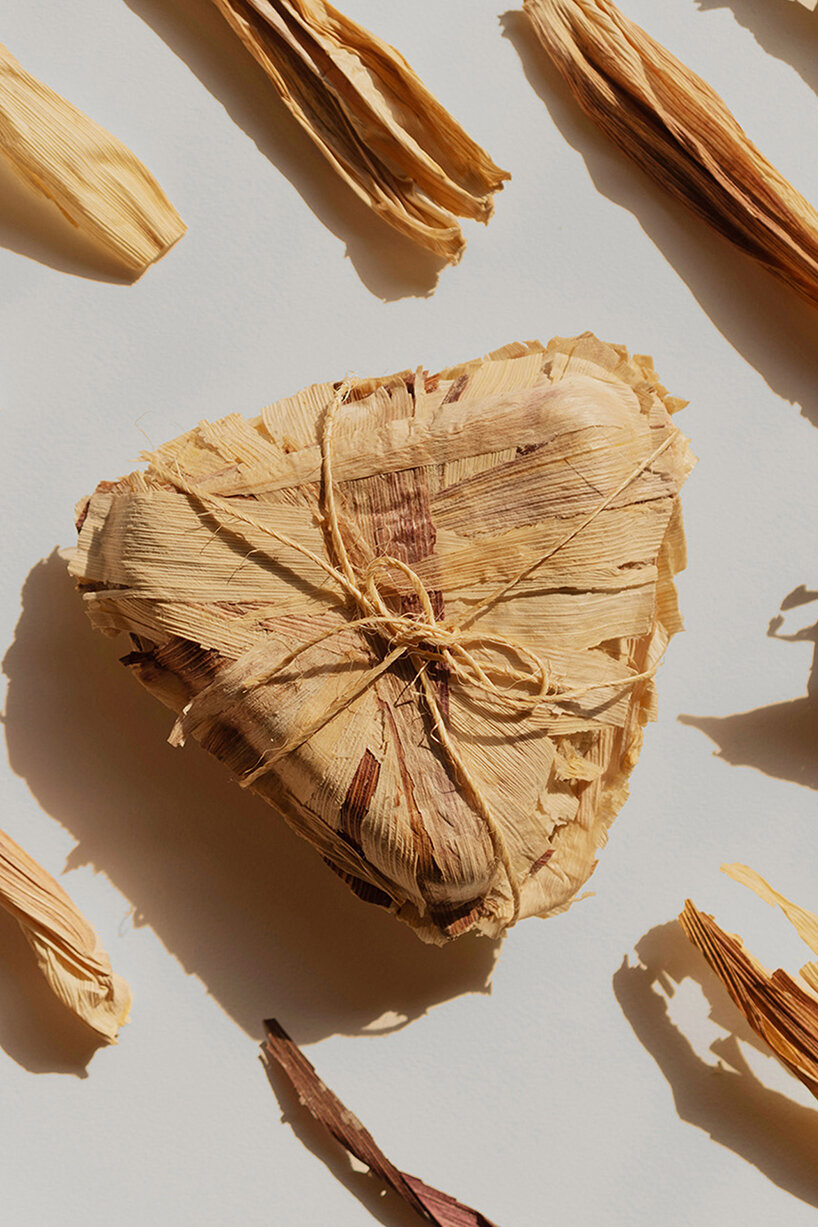
project info:
name: Pieces of Home: Exploring Materials of Mexico
design: SPACE 10
photography: Almendra Isabel
christina petridou I designboom
jun 02, 2022



